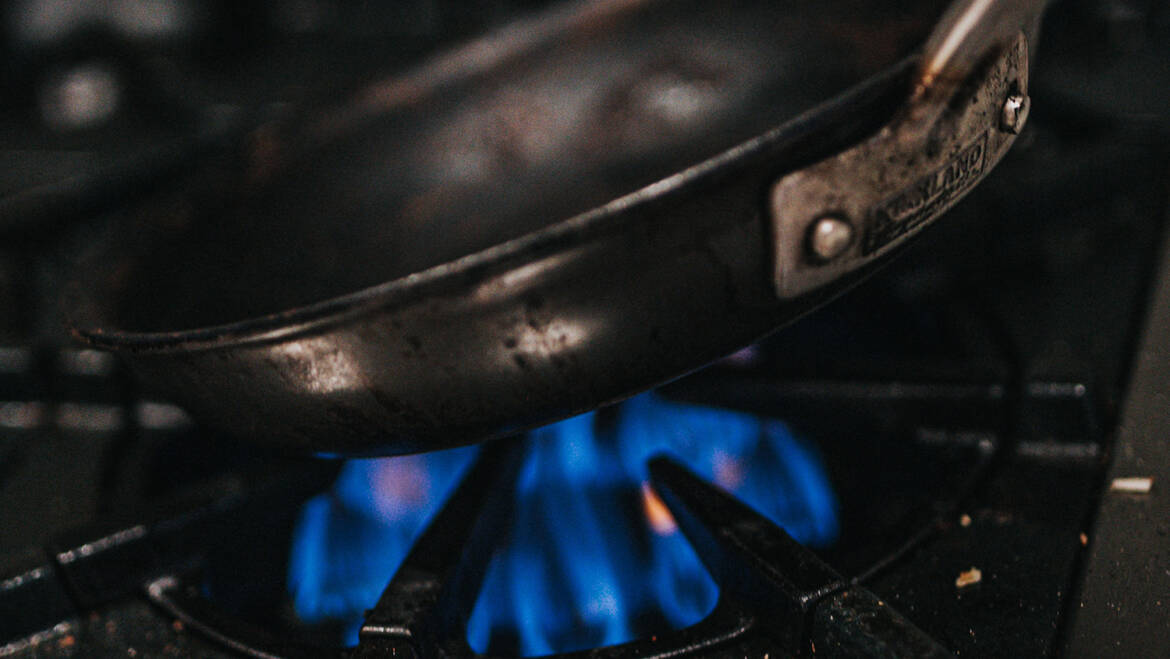Have you ever watched a news story about someone in your community losing their home to a house fire. It’s unexpected and devastating! Nobody likes to think about tragedies like this, but having a safety plan and being aware of potential fire hazards is the best way to keep your home safe from fires.
Most people think of house fires happening to other people, not them. House fires happen because of things like electrical malfunctions, cigarette smoking, or a fireplace mishaps.
When you think about scenarios that might cause a fire to start in your home, you probably aren’t thinking about the most common cause. Most house fires are started by the homeowner right in their own kitchen.
Most house fires start in the kitchen
Cooking related fires are responsible for nearly 50% of all house fires. This is why the NFPA chose the theme “Serve up Fire Safety in the Kitchen”’as this year’s theme for National Fire Prevention Week. The aim of this year’s campaign is to educate the public about the potential fire hazards in the kitchen.
Kitchen Safety tips from NFSPA:
Don’t leave food you’re cooking unattended.
Unattended food is the number one cause of house fires. Have you ever started something for dinner, and forgotten about it? Maybe you hopped on social media for a minute, and before you know it, dinner’s burned? This is exactly how house fires start. Don’t leave food cooking unattended.
If you are baking or cooking something that needs to be left to simmer, use a timer to remind you to check on it.
Don’t leave anything flammable close to your stovetop.
Make sure oven mitts, food packaging, utensils, paper or kitchen towels are not left close to your stovetop.
Keep anything that has the potential to catch on fire at least three feet away from your stovetop.
Don’t drink and cook.
When you are cooking you need to be alert. If you’re tired or drinking, it’s easier to get distracted, make mistakes, or forget about food on the stove.
Be careful when frying with oil.
Grease fires are a common type of kitchen fire that spreads fast! To avoid a grease fire, delicately add food or veggies to oil. Don’t throw food in carelessly causing the oil to splatter.
Keep a lid close by to your cooking area so you can cover your pan quickly if needed.
If a grease fire does happen, never use water to put it out. Cover the flame with a lid or use baking soda or a fire extinguisher to put it out.
Kitchen fire facts:
- Cooking fires are responsible for 49% of home fires and 21% of deaths from home fires.
- Two-thirds of home cooking fires start with food or cooking materials igniting
- Clothing catching fire is responsible for 14% of kitchen fire deaths.
- 31% of kitchen fires are caused by unattended food.
- Thanksgiving is the number one day for kitchen fires.
Kitchen fires are usually preventable. Pay attention when you are cooking and follow proper kitchen safety to keep your family and home safe from a fire.
Other fire safety tips:
- Make sure you have working smoke detectors. Check your smoke alarm to make sure it’s working properly at least once a month.
- Have a fire safety plan. Everyone in your house should know what to do in case of a fire. Make sure everyone knows how to escape and what to do if a fire breaks out. Practice your fire safety plan at least twice a year.
How to protect your home and valuables if there is a fire
Home fires cause around $6.9 million in property damage each year. Review your home insurance coverage with an agent to make sure you have enough coverage to protect your home and your valuables in the event of a fire.
Make sure that you have an up-to date home inventory list of every item in your home. If you have a fire and need to file a claim, having a record of all your possessions will help you to make sure all of your items are accurately valued so that you can replace them.
https://www.nfpa.org/News-and-Research/Publications-and-media/Press-Room/News-releases/2020/NFPA-announces-Serve-Up-Fire-Safety-in-the-Kitchen-as-theme-for-Fire-Prevention-Week-2020
https://www.nfpa.org/Public-Education/Fire-causes-and-risks/Top-fire-causes/Cooking
https://www.insurance.com/home-and-renters-insurance/natural-disasters/homeowner-fire-policy-coverage.html

Add Comment